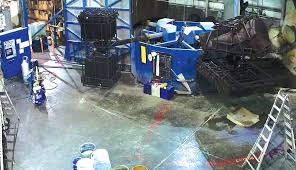
Rotational Molding in the Automotive Industry: Driving Innovation and Performance
Rotational molding, often called as rotomolding, stands apart being a unique approach in the arena of plastic-type material manufacturing. Here is a greater plunge in the particulars of the method:
The Rotomolding Process:
Fabric Reloading: The process initiates using the reloading of polymer resins, generally in powder form, right into a hollow mold.
Warming: The jam-packed fungus is then warmed up within an stove as it rotates bi-axially or tri-axially. This controlled heating system melts the resin, letting it cover the interior top of the fungus consistently.
Air conditioning: Up coming for the melting period, the fungus is cooled, through air flow or normal water, solidifying the resin in the desired design.
Unloading: As soon as cooled, the mold is opened, and also the completed item is extracted, prepared for concluding touches if required.
Special Features:
Tooling Flexibility: Rotational molding permits the roll-out of sophisticated styles and fashions without making use of complex molds, offering tremendous design mobility.
Durability and strength: Products designed through rotational molding possess consistent wall density, ensuring steady strength and durability.
Financial Viability: With relatively low tooling charges and the cabability to create sizeable, hollow parts in one part, rotational molding demonstrates inexpensive for volume manufacturing.
Fabric Diversity: From polyethylene to Pvc material, rotational molding accommodates different thermoplastics, serving varied product demands.
Programs Across Sectors:
Commercial: Storage space tanks, bins, and containers get their genesis in rotational molding because of its cost-efficiency and sturdiness.
Customer Items: From garbage cans to household furniture, rotomolding extends to each day consumer items, capitalizing on its style versatility.
Environmental: Recycling containers, composters, and rainwater harvesting systems exemplify the eco-helpful uses of rotational molding.
Travelling: Rotomolded components are important inside the automotive and marine market sectors, adding to light-weight, deterioration-tolerant factors.
Eliminating Obstacles:
Cycle Time Search engine optimization: Tactics like mold preheating and multiple-left arm rotational machines help minimize the time-eating nature from the method.
Spend Management: Endeavours to lessen unwanted substance and improve trying to recycle features are continuing to handle environment issues.
Substance Developments: Investigation into new resources and preservatives aims to grow the content colour pallette for rotational molding, maximizing product functionality and beauty.
Essentially, Rotational Molding emerges like a multifaceted manufacturing approach, providing a combination of design and style versatility, monetary feasibility, and material adaptability, ready to depart an indelible symbol across numerous market sectors.